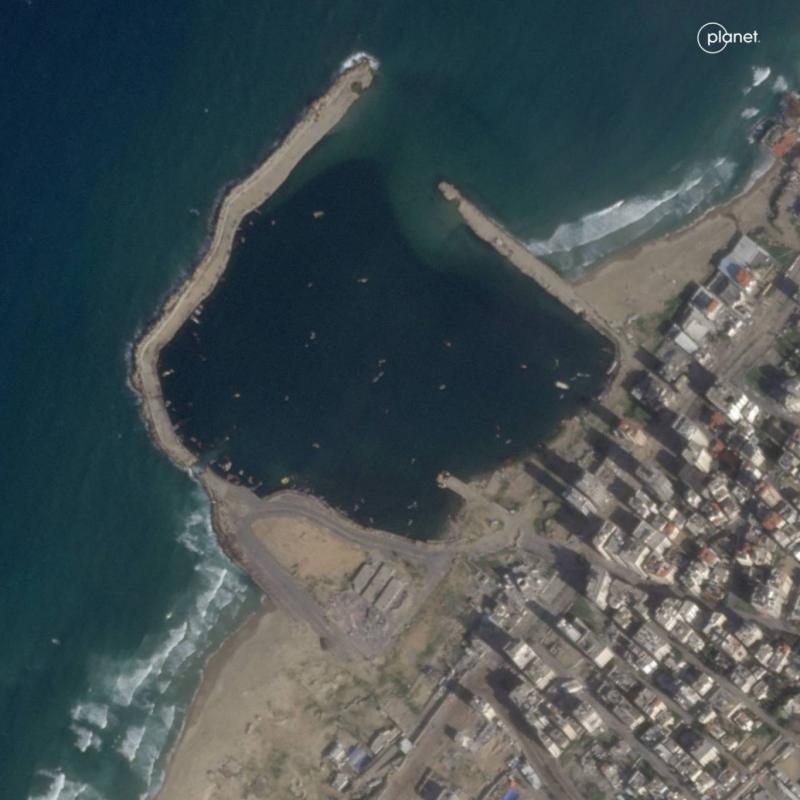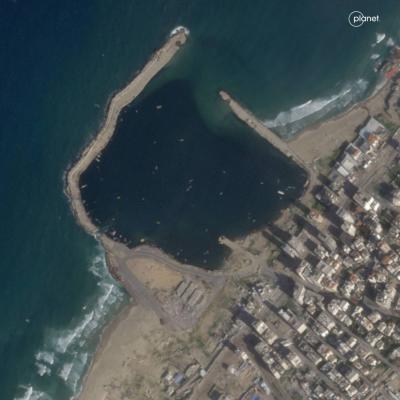The marine dock that the United States intends to construct at some point along the Gaza Strip’s coast evokes both astonishment and curiosity, as well as skepticism regarding its potential location, the management and operation method, and the parties that will handle the receipt and distribution of aid within the besieged territory. After more than five months of war in the Gaza Strip, which has resulted in the deaths of approximately 31,000 Palestinians and injuries to over 70,000 others, Israel's ally, the United States, appears particularly interested in delivering humanitarian aid to the 2.2 million people living in the enclave. This, especially as heartbreaking images of children dying from starvation begin to emerge, according to the Arab World News Agency.
In his State of the Union address before Congress last week, US President Joe Biden announced that he had instructed the military to establish a “temporary port” on the Gaza coast capable of receiving shipments of food, water, and medicine needed in the heavily besieged area. American media reported a Pentagon spokesperson stating that constructing a floating port to deliver aid to Gaza could take at least a month or two before becoming fully operational, and that the port will likely require around 1,000 soldiers for its construction.
So far, no one has disclosed the likely location for the port that Gaza has dreamed of for decades, but it will soon have a dock, while its inhabitants hope it is not too late. Former Jordanian intelligence officer Omar Al-Raddad noted that this project to establish a maritime route from Cyprus to Gaza was one of several options proposed a few years ago but was never implemented. Al-Raddad believes that US officials have stated it could take about two months to deliver the first shipment of aid to those besieged by Israel since October 7, and he mentioned that US forces would not be present on the ground, saying, “There will be no presence of US troops on the ground, but they will be close by at sea to ensure protection.”
However, he also raised legitimate questions about who will receive the shipments at the anticipated port and distribute them to the hundreds of thousands of starving individuals facing the arrival of Ramadan in just days, with no sign of a ceasefire to honor their fasting. Al-Raddad said, “In short, they are considering whether Hamas will play any role in receiving and distributing the shipments… and that is, for me, unlikely given that the destruction of Hamas remains Israel’s primary objective thus far.”
**Opening a Maritime Corridor for Emergency Aid**
Adam Abaza, Deputy Leader of the British Conservative Party in Hammersmith, West London, preempted his country’s announcement of joining the US in opening a maritime corridor for emergency aid off the coast of Gaza, emphasizing that the marine port alone should not be relied upon to bring assistance into the Gaza Strip. He added, “The coming weeks will reveal whether this will make any real difference in the levels of aid being provided in the humanitarian situation in Gaza or not.”
But before shipments reach Gaza, and before looking for solutions for their receipt and distribution, a Jordanian military maritime planner expressed astonishment that the world must wait two full months for the Americans to finish building the anticipated port. He stated that the US is more than capable of conducting landings in Gaza without any port. The maritime planner remarked, "I expect that the entity tasked with this issue (building the marine dock) is the US base in Sardinia, Italy. The US is capable of making landings without any port... meaning, the ship arrives and docks directly on the shore, then opens its hold to unload trucks and depart.”
He continued, “They have vehicles called LCU... these vehicles can land and then move inland... each can carry the load of two or three trucks... and they can travel back and forth and carry whatever quantities they want.” A senior Iraqi maritime official described the construction of a limited marine port as proposed by the Americans as “a process that, if not impossible, is very challenging, as it requires many things.”
Asad Al-Rashid, project manager for the Grand Fao Port in Basra, stated in a text message that this operation necessitates dealing with both the sea and land, in addition to providing sufficient depths for dock handling. He added, “This function requires having sufficient marine depth for the ship to dock… and it requires having a sturdy marine front to withstand the ship's anchoring and simultaneously support the loads that will be discharged at the dock without pushing the shore or the soil into the sea. This requires protection... typically relying on the soil type in the area by adding certain layers to prevent sand from leaking into the sea, while also protecting the shore and providing a dock for the ship.”
He added, “All of these things are difficult to accomplish within 60 days, and thus could affect the quality of work... If we are talking about a temporary dock for humanitarian tasks or similar, this work is very difficult to accomplish within 60 days.” The military maritime planner believes that the US Army will assign the task of constructing this marine structure, whether a port or a dock, to its units stationed on the Italian island of Sardinia. He added via phone from Amman, “The US military has a full engineering unit called Sea Bees... this unit’s job is to construct such docks... even though we haven’t heard about this since World War II.”
**The Likely Location for the Promised Dock**
A political source in the Gaza Strip has chosen the end of Salah al-Din Street (Netzareem) in central Gaza as the likely site for the Americans to build their promised dock. The individual, who requested anonymity, stated that this area provides several factors for the Israelis “who will undoubtedly control the operation from start to finish.” He added, “This point is located between two main roundabouts, providing a regulated area that facilitates control.”
Our source paints a close-up picture of the area which he claims is not far from the Nablusi Roundabout, where more than 100 Palestinians were killed while gathering for aid from a truck before being fired upon, with the Israelis denying the accusation. The Israeli military is demolishing buildings surrounding the Netzarim corridor to create a buffer zone.
He also mentioned, “This spot is about 20 meters above sea level and lies between the two roundabouts that the Israeli military completely controls. This landscape provides them with safety and also facilitates their distribution process as it is located right in the middle of the strip.” If they disregard this option, the Gaza source claims that the Al-Zahra beach would be another choice they could resort to, although it is only one kilometer from the end of Salah al-Din Street.
The Jordanian maritime planner stated that donor entities have adopted Cyprus as a logistical center for gathering and sorting the aid. He added, “More importantly, inspecting the shipments and ensuring the quality and quantities of the loads, and this task will be solely in the hands of the Israeli side, which will ensure that every grain of flour entering the Strip is properly checked.”
So far, only a few dozen aid trucks have entered the Gaza Strip via the Rafah border with Egypt. These trucks do not proceed into Gaza until being inspected not far from the Karam Abu Salem crossing on the Egyptian-Israeli border with the Strip. The limited number of trucks and warnings of a looming famine have led several Arab and non-Arab countries to drop aid from the air, particularly to northern Gaza, which Israel prevents assistance from reaching. This move is something Palestinians in Gaza claim does not provide enough to save them.
As work progresses on the project to establish the marine dock, the military planner said that the mission announced by Britain to provide assistance will transfer the essential aid and relief materials from Larnaca, Cyprus. He added that the British will secure and guard the shipments during the maritime route until they arrive at the gathering and unloading sites. He expected the volume of shipments to reach what equates to 200 trucks per day.
He continued, “In practice, the potential to implement the temporary port exists and the capabilities are available to the US forces, within 60 days with the effort of more than 1,000 American personnel, but there is an obstacle facing this effort; the American commitment not to send military personnel and forces to Gaza, due to various fears and considerations, including the desire to avoid dragging the US into a conflict it does not wish to be part of."
The military planner does not provide an answer regarding which party he believes will undertake the task of receiving aid in Gaza and distributing it to the hungry. However, Al-Raddad states that both political and non-political Palestinian entities may play a role in this phase. He added, “It is certain that Hamas will have no role... leaks have begun about coordination with families in the enclave and arrangements supervised by some Palestinian politicians.”
Nonetheless, the Palestinian political source raises doubts about the Israeli and American intentions behind announcing such a project at this particular time after the deaths and injuries of around 100,000 people since October 7. He said, “Perhaps they want to re-close the Rafah crossing so that the aid entering through the temporary marine dock is all that the people of Gaza can receive. I believe this is merely a prelude to the third and greatest phase of the Israeli military operation... the entry into Rafah.”




